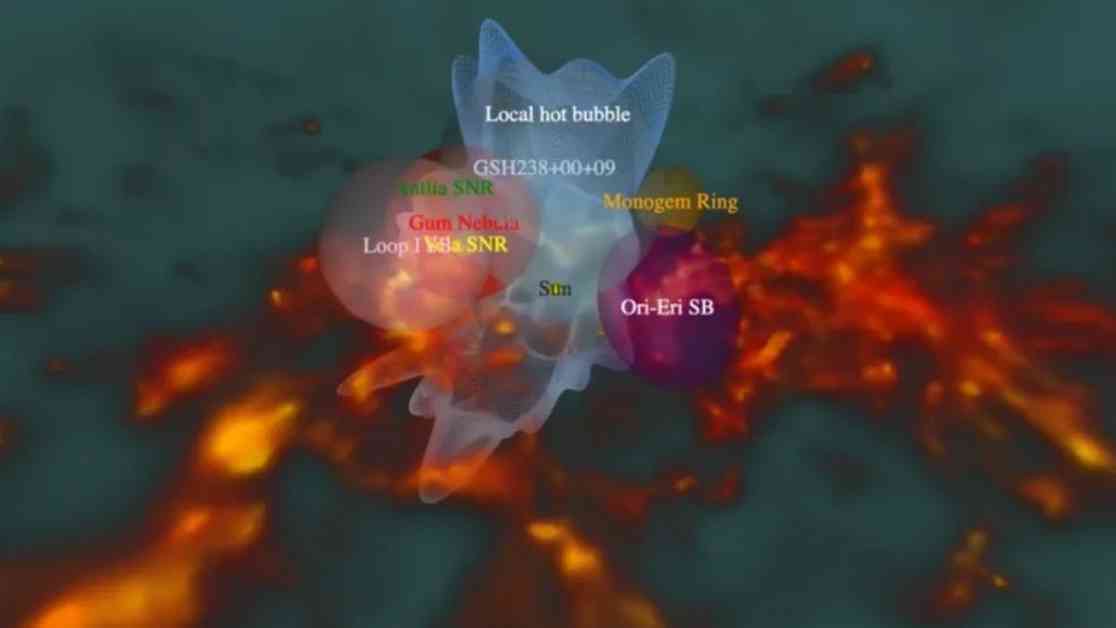A 3D model of the Milky Way’s “local bubble” has been created using data from the eROSITA All-Sky Survey, shedding light on the structure and dynamics of the low-density bubble that surrounds our solar system. This bubble, known as the Local Hot Bubble (LHB), contains both hot and cold spots, indicating a large-scale temperature gradient that may have been caused by exploding massive stars in supernovas.
One interesting discovery from the 3D map is the presence of an “interstellar tunnel” that appears to connect the solar system’s bubble with a neighboring superbubble. This tunnel, directed towards the constellation Centaurus, could have been carved out by erupting young stars and powerful stellar winds.
Scientists have been aware of the LHB concept for decades, using it to explain background measurements of soft X-rays that are unable to travel far through interstellar space due to the lack of interstellar dust in our immediate solar neighborhood. However, the existence of this bubble was challenged in 1996 when X-ray emissions similar to those from the LHB were found to originate from exchanges between the solar wind and Earth’s geocorona.
To address this challenge, the eROSITA telescope, launched in 2019 as part of the Spectrum-Roentgen-Gamma (SRG) mission, provided a clean view of the X-ray sky from outside Earth’s geocorona. By analyzing data collected during a solar minimum period, when solar winds are weak, researchers were able to create a detailed 3D map of the LHB, revealing temperature disparities and the presence of the Centaurus tunnel.
The team behind the study also identified other interstellar medium tunnels, such as the Canis Majoris tunnel, and mapped dense molecular clouds at the edge of the LHB. These findings offer insights into the formation and evolution of the LHB, as well as the dynamics of the interstellar medium between stars in our cosmic neighborhood.
Overall, this research provides a fascinating glimpse into the structure and interconnectedness of our solar system’s local bubble, highlighting the role of stellar feedback in shaping the Milky Way. The team’s 3D model offers a unique perspective on our cosmic environment and opens up new possibilities for further exploration and discovery in the field of astrophysics.










